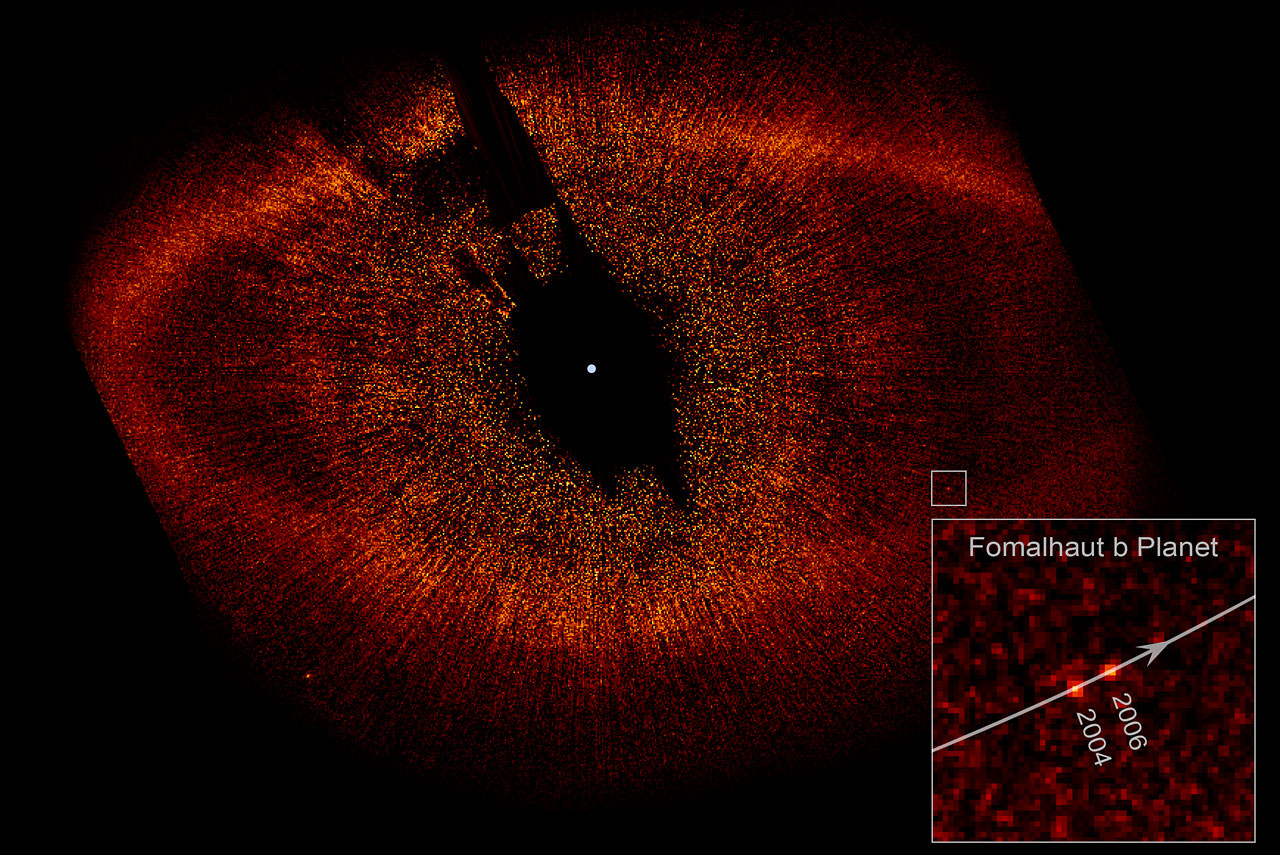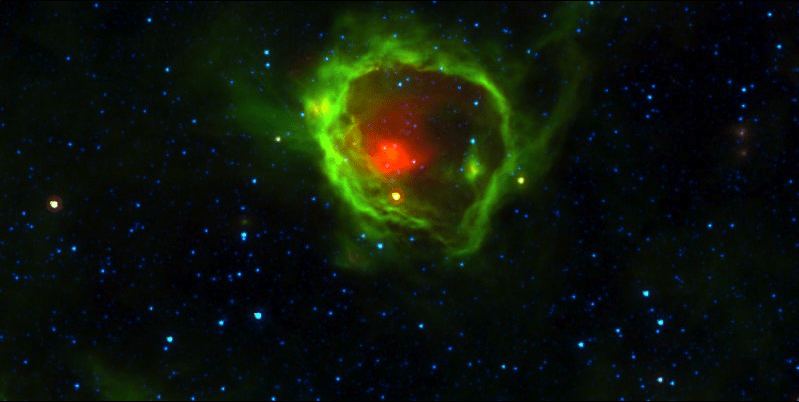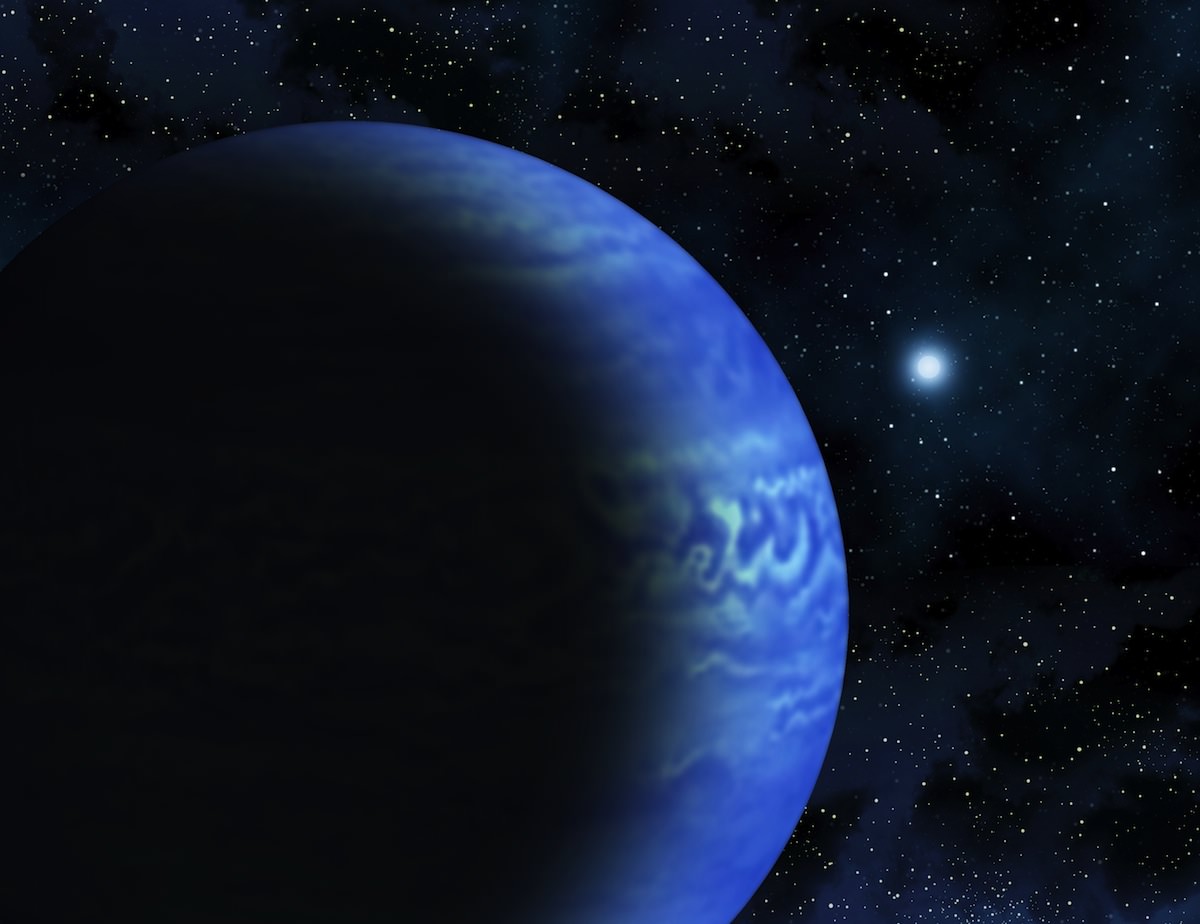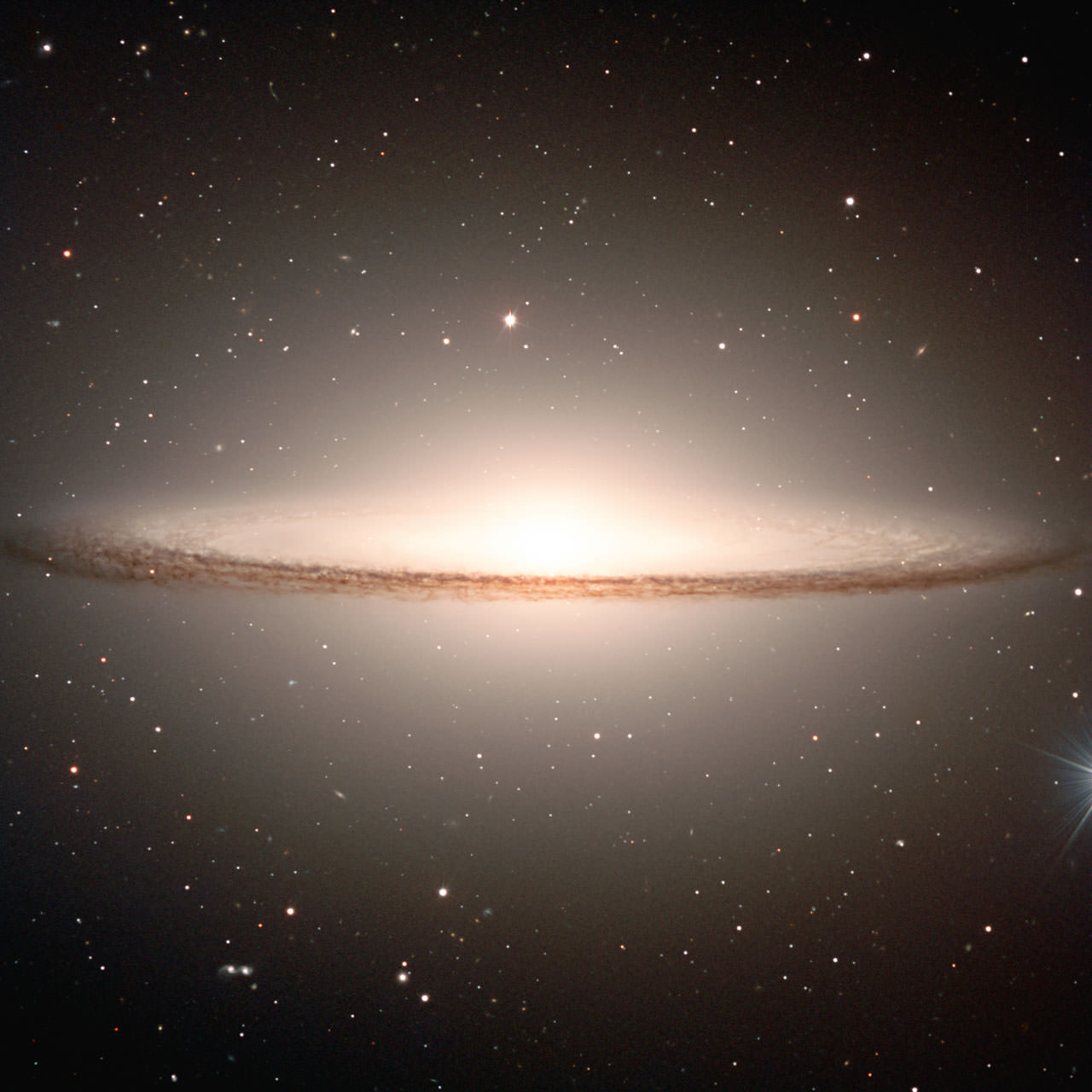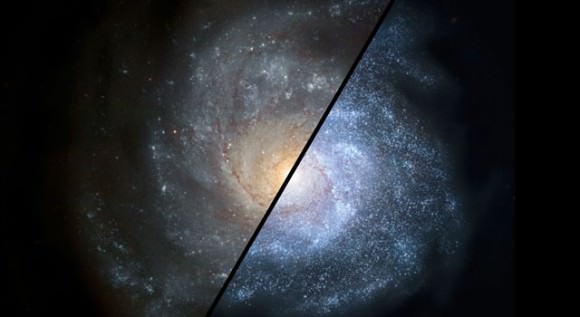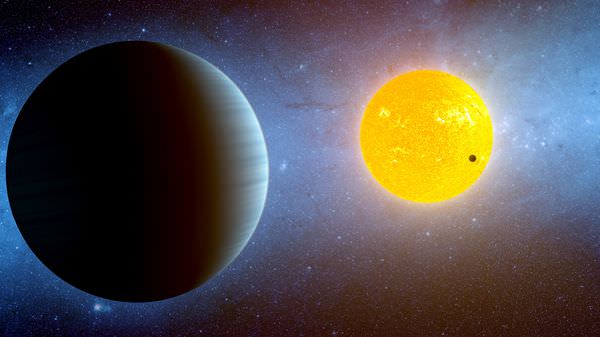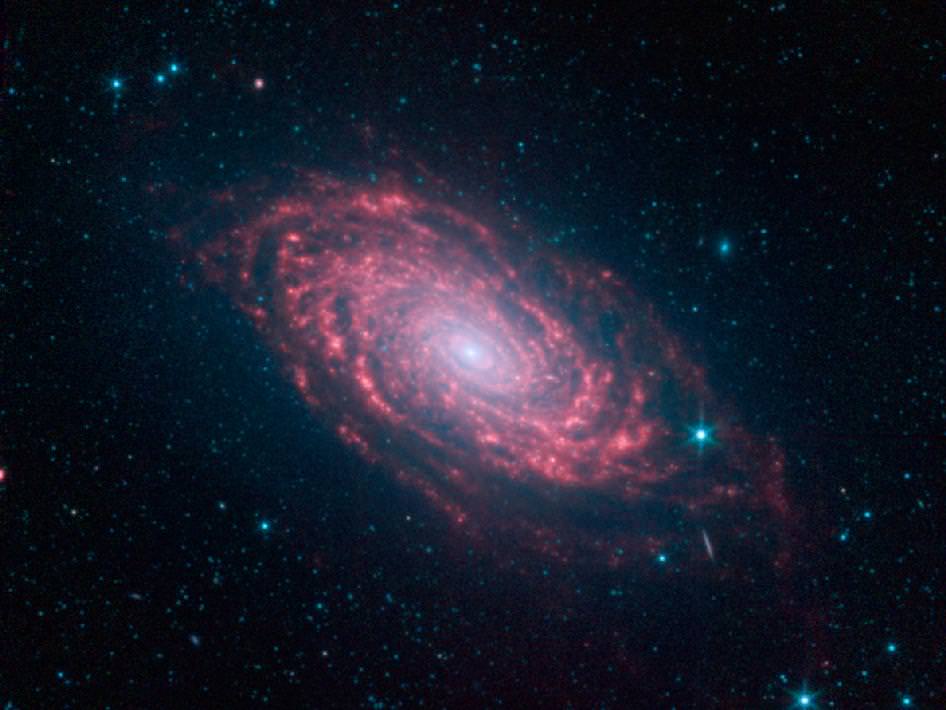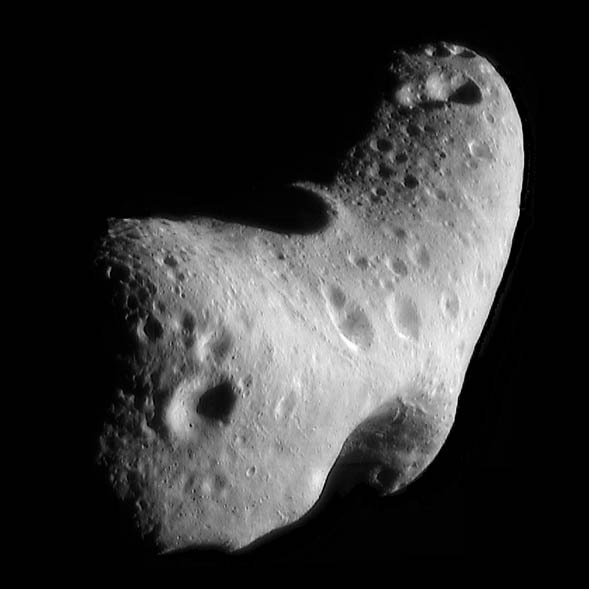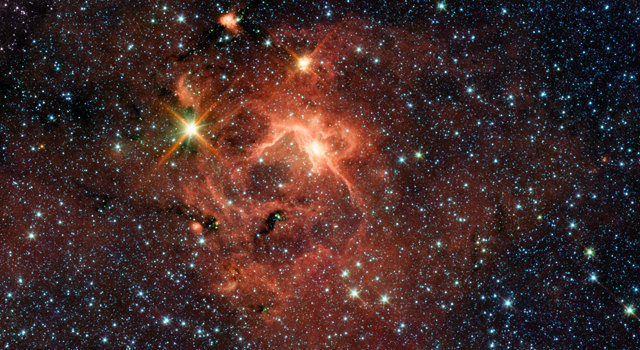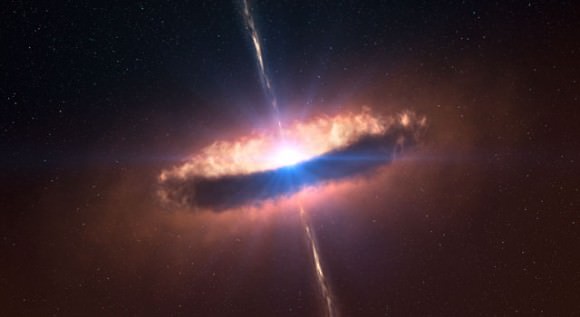[/caption]
When the Hubble Space Telescope photographed the apparent exoplanet Fomalhaut b in 2008, it was regarded as the first visible light image obtained of a planet orbiting another star. The breakthrough was announced by a research team led by Paul Kalas of the University of California, Berkeley. The planet was estimated to be approximately the size of Saturn, but no more than three times Jupiter’s mass, or perhaps smaller than Saturn according to some other studies, and might even have rings. It resides within a debris ring which encircles the star Fomalhaut, about 25 light-years away.
Another team at Princeton, however, has just announced that they believe the original findings are in error, and that the planet is actually a dust cloud, based on new observations by the Spitzer Space Telescope. Their paper has just been accepted by the Astrophysical Journal.
According to the abstract:
The nearby A4-type star Fomalhaut hosts a debris belt in the form of an eccentric ring, which is thought to be caused by dynamical influence from a giant planet companion. In 2008, a detection of a point-source inside the inner edge of the ring was reported and was interpreted as a direct image of the planet, named Fomalhaut b. The detection was made at ~600–800 nm, but no corresponding signatures were found in the near-infrared range, where the bulk emission of such a planet should be expected. Here we present deep observations of Fomalhaut with Spitzer/IRAC at 4.5 µm, using a novel PSF subtraction technique based on ADI and LOCI, in order to substantially improve the Spitzer contrast at small separations. The results provide more than an order of magnitude improvement in the upper flux limit of Fomalhaut b and exclude the possibility that any flux from a giant planet surface contributes to the observed flux at visible wavelengths. This renders any direct connection between the observed light source and the dynamically inferred giant planet highly unlikely. We discuss several possible interpretations of the total body of observations of the Fomalhaut system, and find that the interpretation that best matches the available data for the observed source is scattered light from transient or semi-transient dust cloud.
Kalas has responded to the new study, saying that they considered the dust cloud possibility but ruled it out for various reasons. For one thing, Spitzer lacks the light sensitivity to detect a Saturn-sized planet, and bright rings could also explain the optical characteristics observed. He says, “We welcome the new Spitzer data, but we don’t really agree with this interpretation.”
The Princeton team, interestingly, thinks that there may be a real planet orbiting Fomalhaut, but still hiding from detection. From the paper:
In particular, we find that there is almost certainly no direct flux from a planet contributing to the visible-light signature. This, in combination with the existing body of data for the Fomalhaut system, strongly implies that the dynamically inferred giant planet companion and the visible-light point source are physically unrelated. This in turn implies that the ‘real’ Fomalhaut b still hides in the system. Although we do find a tentative point source in our images that could in principle correspond to this object, its significance is too low to distinguish whether it is real or not at this point.
A resolution to the debate may come from the James Webb Space Telescope, scheduled to launch in 2018.
Of course it will be disappointing if Fomalhaut b does turn out to not be a planet after all, but let’s not forget that thousands of other ones are being discovered and confirmed. There may occasionally be hits-and-misses, but so far the planetary hunt overall has been nothing short of a home run…
The paper is available here.

